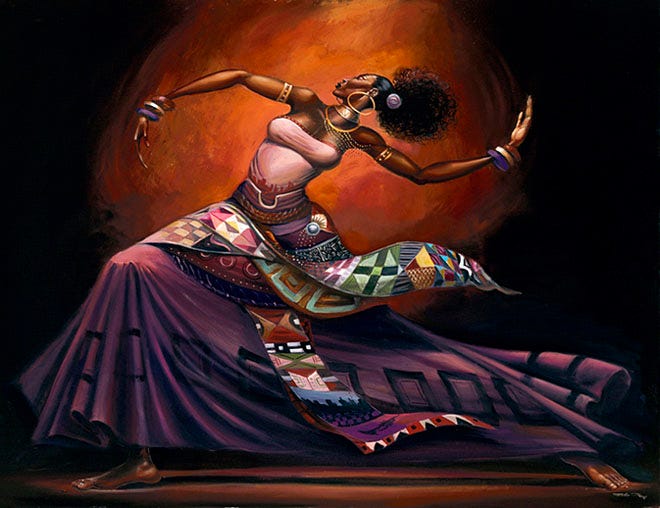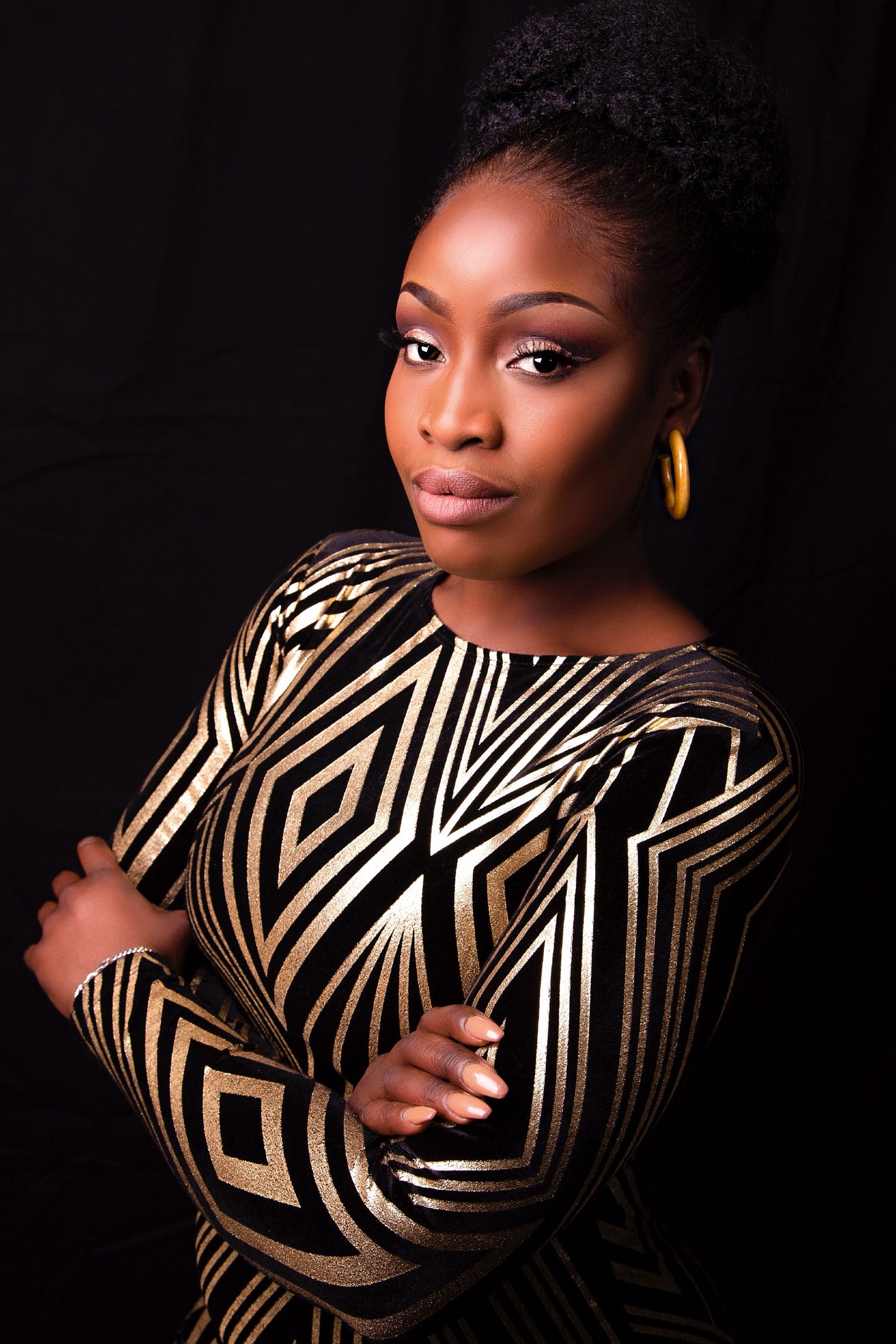How to Co-Regulate in Friendships Without Absorbing Others’ Emotions
The 10:2 Rule for Emotional Boundaries, Mutual Support, and Avoiding Burnout by The Lovette Jallow
For years, I engaged in co-regulation with friends without realizing I was absorbing their emotions—carrying their anger, their fear, their chaos. I thought that being a good friend, daughter, partner meant practicing emotional regulation in friendships, but instead, I was draining myself.
Then, after 18 months of domestic abuse at the hands of someone meant to protect—a partner, a police officer—that illusion shattered.
Left with a broken ACL, my patella, my knee bone.
That’s when I learned a brutal truth:
When you absorb someone’s dysregulation, you’ll be the one who pays the price.
Because society doesn’t protect victims—not even the ones who break under the weight of survival.
Breakers are often born to break. And if you stand too close, you risk becoming their collateral.
That day, I made a decision:
If I was going to feel something, I was going to own it.
Not let it own me.
This is how I learned the cost of emotional dysregulation—and why I built the 10:2 Rule to stop absorbing others’ emotions and start protecting my own.
Childhood Emotional Labor: Learning to Regulate for Others
I didn’t stumble upon emotional regulation as an adult.
I had been doing it my entire life—long before I had the words for it.
As a child, I learned to manage the emotions of adults before I even understood my own. I knew how to say the right things to keep people calm, how to phrase my words so they would be palatable to them.
But there was a cost.
To keep others calm as a child, I had to agree with them—even when they were wrong.
To avoid conflict, I had to swallow my own emotions—even when I was hurt.
I became an expert at de-escalation before I ever learned to express my own needs.
And the most dangerous part?
I thought this was normal.
But the older I got, the more I realized something critical:
Regulating others without accountability doesn’t help them grow. It only reinforces bad behavior.
So I stopped.
Why I Stopped Absorbing Other People’s Emotions
When someone is dysregulated, their emotions are too big for them to hold alone.
They have two choices:
Project outward—make their emotions your problem.
Drag you in—force you to match their intensity.
Either way, the outcome is the same:
They walk away feeling relieved.
And you?
You leave exhausted, drained, and carrying emotions that were never yours to begin with.
For years, I let myself be the emotional sponge—absorbing the chaos of others, co-regulating without consent.
Until one day, I asked myself:
Who is regulating me?
And the answer was no one. I self-soothed-
Because if you are the one co-regulating the adults,
who is handling your emotions?
No one.
Except you.
And that’s when I stopped.
What Is the 10:2 Rule by Lovette Jallow? A Co-Regulation Strategy for Friendships
For years, I absorbed other people’s emotions—carrying their anger, their fear, their chaos. I thought that being a good friend, a good daughter, a good partner meant stabilizing those around me.
But emotional labor without boundaries isn’t kindness. It’s self-abandonment.
I didn’t want to withdraw from people entirely, but I also couldn’t keep carrying their emotions as if they were my own. I needed a way to stay engaged without being consumed.
The 10:2 Rule became my solution—a framework to help me regulate emotional exchanges on my terms, ensuring that I could support without absorbing, and be present without drowning in someone else’s intensity.
What Is the 10:2 Rule? A Co-Regulation Strategy for Friendships
When someone is at a 10 emotionally, they seek co-regulation from friends and want you to match their intensity.
You may be compelled to say things like:
“What?! That’s awful! That’s horrible!”
“I can’t believe this! Let’s do something about it!”
And before you know it, you’re pulled into their storm—feeling emotions that aren’t even yours.
Yeah. We don’t do that here.
Instead, you pivot to a 2.
You stay calm, steady, and grounded—not to dismiss their emotions, but to anchor them in a regulated state.
Why 2? Why Not 0?
Because you don’t need to bring someone all the way to 0 for them to regain control.
You just need to bring them low enough for their brain to take over again.
At a 10, they are pure reaction.
At a 2, they can start to think.
You’re not ignoring their emotions.
You’re guiding them back to themselves.
How to Apply the 10:2 Rule
Practicing emotional regulation in friendships doesn’t mean fixing someone’s problems—it means guiding them back to themselves. The 10:2 Rule works by anchoring them in the present, moving them from reactivity to reflection without absorbing their emotions.
Your friend calls you in a full meltdown (a 10). Instead of matching their intensity with, “That’s horrible! Let’s burn it all down!”—you ground them. You respond calmly (a 2) with, “I hear you. That’s really frustrating. Let’s talk it through.” Over the course of the conversation, you guide them down to a 5, then to a 2, where they can think clearly and act from a place of control.
Here’s how:
1. Acknowledge the Emotion
“I hear you. That sounds really frustrating.”
Recognize their feelings without mirroring their intensity.
2. Bring Them Into Their Body
“Where in your body do you feel this?”
This prevents emotional spiraling by grounding them in the present.
3. Identify the Root Cause
“Does this remind you of something else?”
People often react to old wounds, not just the current situation.
4. Gently Challenge Once They Reach a 5
Once they’ve de-escalated, ask reflective questions to help them process.
“Could there be another way to look at this?” or “Is this situation different from past experiences?”
The goal is not to dismiss their emotions, but to help them regain control of their own response—without losing yourself in the process.
This method is especially helpful for autistic individuals, where black-and-white thinking can keep someone stuck in a dysregulated state. Where rigid thinking can make emotions feel absolute.
When Co-Regulation Fails: Setting Emotional Boundaries in Friendship
There are moments when even 10:2 isn’t enough.
If someone actively resists regulation, if they can’t come down from 10 because their dysregulation is deeply etched in past trauma, if they want to stay in their chaos—
Then you must disengage.
Because co-regulation is not something you do for just anyone.
I no longer offer my energy freely to those who refuse to take ownership of their emotions.
I no longer sacrifice my peace for people who treat emotional regulation as a service, not a skill they should develop themselves.
This is why I created a system—to ensure that those in my life are capable of emotional accountability.
Where 10:2 Does NOT Apply:
I implement 10:2 in close relationships—friends, chosen family, partners—where mutual emotional accountability exists.
There are moments when co-regulation with a dysregulated friend isn’t enough.
Like any framework, the 10:2 Rule isn’t a one-size-fits-all approach. Here’s where I don’t use it:
When someone refuses to self-regulate at all – If someone consistently disregards emotional accountability, I take it as a sign that they may not be someone I can stay close to.
If a friend perceives it as dismissive – It’s not about shutting them down but keeping both of us in an emotionally stable space. If they feel invalidated, I clarify: ‘I hear you. I just want to support you without amplifying the distress further.
During extreme crisis or trauma – If a close friend is experiencing deep trauma (grief, loss, abuse), the 10:2 Rule might not be the best approach. Sometimes, people just need presence, not de-escalation.
The key is discernment.
I also don’t apply this to:
• Co-workers, strangers, or acquaintances (workplaces should have their own systems in place for emotional regulation).
• Random people online expecting emotional labor.
However, I make an exception when it comes to children—especially parents struggling with kids in public meltdowns. In these moments, I practice an adapted version of the 10:2 Rule, not to regulate the parent, but to help the child come down from distress. Kids don’t have the same emotional regulation tools as adults, and sometimes a calm, external presence can help de-escalate a situation.
The Autistic Friendship Inventory: Emotional Accountability in Relationships
In friendships, regulation should be mutual, not one-sided.
This is why, every three months, I sit down with my closest friends for an intentional check-in.
This is especially important for neurodivergent relationships, where we all have different:
Attachment styles
Communication methods
Emotional needs
Instead of assuming how someone feels, I ask.
Instead of waiting for issues to explode, I check in proactively.
Some of the questions we go through:
“Are there things I should take more interest in?”
“Have I caused you harm?”
“What do you need more of from me?”
“Do you feel seen and valued in this friendship?”
This isn’t about damage control—it’s about ensuring that our friendship remains balanced, safe, and intentional.
Because friendships should not be places of emotional labor without reciprocity.
Co-Regulation vs. Codependency: How to Tell the Difference in Friendships
Who you surround yourself with matters.
If you are the one everyone dysregulates with, but no one co-regulates with you,
you become a pressure cooker—stabilizing others while carrying your emotions alone.
Friendship should not be a one-sided emotional exchange where you are expected to engage in co-regulation with friends while your own needs go unnoticed.
So now?
I choose differently.
Anyone who lacks emotional regulation has to show me they can co-regulate.
I assess this early in acquaintanceships before engaging in friendships.
If they can’t learn, I have no issue keeping them at a distance.
Because emotional regulation is a skill—not a personality trait, not an accident of upbringing, and not someone else's responsibility to manage for you.
And if someone lacks it? They must at least be open to learning.
At the end of the day, co-regulation in relationships isn’t just an individual skill—it shapes the health of our friendships and emotional well-being. If I have to carry everything alone, that’s not a friendship, it’s an emotional transaction. The people who remain in my life are those who understand that emotional labor should be shared, not placed entirely on one person.
The Cost of Carrying Others' Emotions
You know the feeling.
That pit in your stomach when you see a certain name flash on your phone.
Because you already know—
This isn’t a call to check in on you.
This isn’t a call for mutual connection.
It’s a request for emotional labor.
And if you pick up, you will absorb their emotions while they leave lighter.
The Biggest Lesson in Emotional Boundaries
If I could tell my younger self one thing, it would be this:
It is not your job to regulate others.
Not even if it’s your caregiver.
Not even if they say they need you.
Because here’s the truth:
Most people’s physical age, emotional age, and mental age do not match.
And just because someone is older than you, doesn’t mean they are emotionally grown.
Final Thought: Do You Continue Absorbing, or Do You Step Away?
If this resonates, ask yourself:
Are you allowed to express your emotions in this relationship, or are you just a container for theirs?
Do you feel lighter or heavier after certain conversations?
Have you mistaken emotional labor for love?
The moment you stop carrying emotions that aren’t yours,
you’ll find that the relationships left standing are the ones that sustain you.
And now?
When I see a name flash on my phone-
I don’t brace myself.
I don’t shrink.
I decide.
Who is Lovette Jallow?
Lovette Jallow is a 9 time award-winning author, speaker, and advocate specializing in neurodiversity, intersectionality, and human rights. As a Black autistic queer disabled woman, she has built one of Scandinavia’s largest separatist networks for Black women while championing equity and mutual care within marginalized communities. Lovette uses her platform to challenge societal norms, empower others, and redefine what authentic, inclusive communities look like.
Learn more about Lovette’s work at www.lovettejallow.com.











I relate to this so much as I've been carrying the emotional load for family and friends for a very long time and I keep burning out and then regaining my energy only to do it all over again. I was beginning to wonder if I was alone in this and finding your work and reading your newsletters has really helped me gain a better understanding of hos I relate with the world. Thank you 😊
Wow this is so incredible I really learned a lot and resonated with so much of it. Thank you for sharing!!